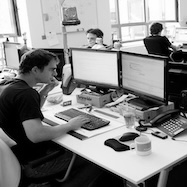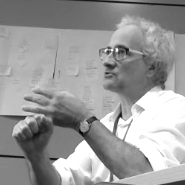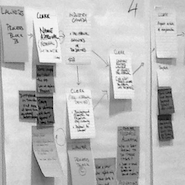Reinventing great businesses and services
The future of management lies, not in asserting ourselves better, but in the innovative ways we engage with and liberate the potential of every person in your organisation - systemic thinking

Are we close enough to our customers?
Are we innovative enough?
Are we effective and adaptive enough?
We know the traditional command & control methods that we have grown up with are not sufficient, and many are already stepping in to revolutionising the way they work. Begin to re-invent your organisation in the way that you know is right.
I bring together insights and methods, working alongside you, to shift from how you operate today, to a flexible, team based, better, and far more effective systemic way of working.
To redefine what your organisation does, and how you do it.
Bringing to you that which can be so elusive; the proven practice and expertise of authentic change, and knowing how to create and manage good services.
Are we innovative enough?
Are we effective and adaptive enough?
We know the traditional command & control methods that we have grown up with are not sufficient, and many are already stepping in to revolutionising the way they work. Begin to re-invent your organisation in the way that you know is right.
I bring together insights and methods, working alongside you, to shift from how you operate today, to a flexible, team based, better, and far more effective systemic way of working.
To redefine what your organisation does, and how you do it.
Bringing to you that which can be so elusive; the proven practice and expertise of authentic change, and knowing how to create and manage good services.
I work with you and your teams, to liberate the potential that you have locked in your organisation.
- a critical friend,
- together, develop your internal consultants,
- lead service systemic transformation,
- workshops.
- a critical friend,
- together, develop your internal consultants,
- lead service systemic transformation,
- workshops.
Dealing with your complex world to bring clarity, through systemic design, the liberated method & systems thinking.
|
Organisational assessment; understand your current capability, and the potential to realise what you could achieve, and how to achieve it.
|
|










